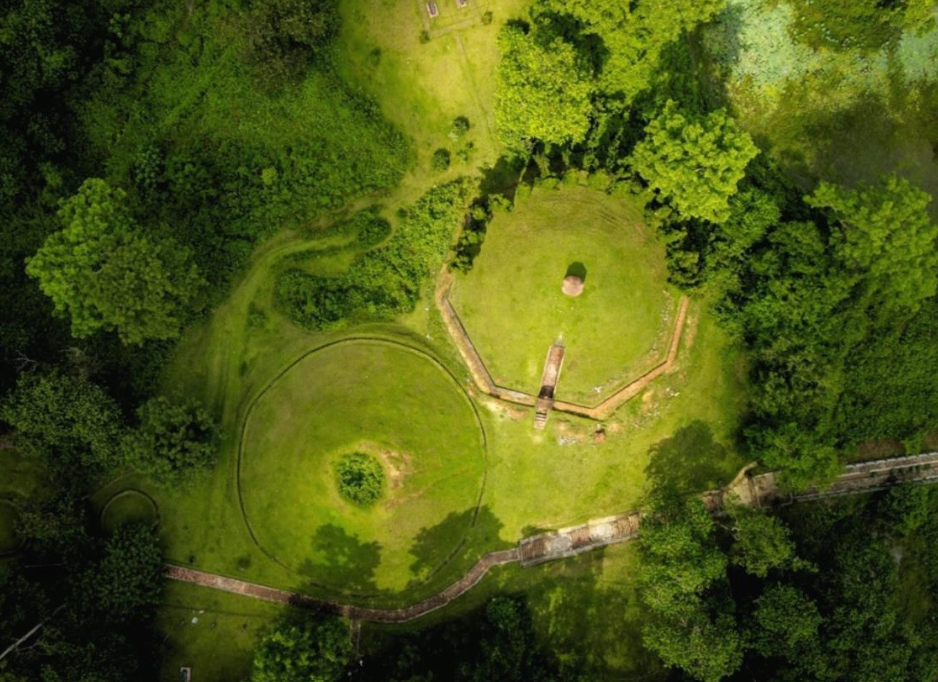India, a land of rich cultural heritage and historical marvels, has added another jewel to its crown of UNESCO World Heritage Sites. The Charaideo Maidam, located in the northeastern state of Assam, has recently been inscribed on the prestigious list, becoming India’s 41st UNESCO World Heritage Site. This recognition not only highlights the site’s exceptional cultural significance but also puts it on the global map for travelers and history enthusiasts alike.

Nestled in the Charaideo district of Assam, about 30 kilometers from Sivasagar town, Charaideo Maidam is a testament to the glorious Ahom dynasty that ruled Assam for six centuries. The site comprises a complex of maidams or tumuli (burial mounds) that served as the final resting place for Ahom royalty and their family members. These maidams, with their unique architectural style and historical importance, offer visitors a glimpse into the rich cultural tapestry of ancient Assam.
The Ahom dynasty, which ruled from 1228 to 1826 CE, left an indelible mark on Assamese culture, language, and architecture. The Charaideo Maidam, established in 1228 CE by the first Ahom king Chaolung Sukaphaa, was not just a burial ground but also the dynasty’s first capital. Over time, it evolved into a sacred space, embodying the spiritual and cultural essence of the Ahom civilization.
The maidams at Charaideo are architectural marvels, showcasing a blend of indigenous Assamese and Tai-Ahom building techniques. Each maidam consists of a hemispherical mound with an underground vault, where the remains of the deceased royalty were interred along with their prized possessions. The vaults were typically constructed using bricks and featured intricate carvings and decorations, reflecting the artistic prowess of the Ahom craftsmen.
What makes Charaideo Maidam truly unique is its representation of the Ahom people’s worldview and their concept of the afterlife. The site is not merely a necropolis but a sacred landscape that embodies the seamless connection between the physical and spiritual realms in Ahom culture. The maidams were believed to be gateways to the afterlife, where the deceased royalty could continue to influence the living world.
For visitors, Charaideo Maidam offers a captivating journey through time. As you walk among the ancient mounds, you can almost feel the whispers of a bygone era. The site’s serene atmosphere, coupled with its historical significance, creates an immersive experience that transports you back to the days of Ahom glory.

The UNESCO World Heritage status is expected to boost tourism in the region significantly. The recognition will not only help in better preservation and management of the site but also put Assam on the global tourism map. Travelers can hopefully now look forward to improved infrastructure, guided tours, and a deeper understanding of this lesser-known chapter of Indian history. When planning a visit to Charaideo Maidam, consider combining it with other nearby attractions. The town of Sivasagar, the last capital of the Ahom kingdom, is home to several historical sites, including the Rang Ghar (an amphitheater), Talatal Ghar (a seven-storied palace), and Kareng Ghar (the royal palace). These sites, along with Charaideo Maidam, offer a comprehensive insight into the grandeur of the Ahom dynasty.
The best time to visit Charaideo Maidam is during the winter months, from November to February, when the weather is pleasant and conducive to outdoor exploration. The site is easily accessible by road from Sivasagar town, and guided tours are available for those seeking a more in-depth understanding of its historical and cultural significance
The UNESCO recognition of Charaideo Maidam is also a reminder of the importance of preserving our cultural heritage. It highlights the need for sustainable tourism practices that balance visitor access with conservation efforts. As travelers, we have the responsibility to approach such sites with respect and mindfulness, ensuring that they remain intact for future generations to appreciate and learn from.
For those interested in photography, Charaideo Maidam offers numerous opportunities to capture stunning images. The symmetrical mounds against the backdrop of Assam’s lush landscape create a visually striking scene, especially during the golden hours of sunrise and sunset.
Whether you’re a history buff, a culture enthusiast, or simply a curious traveler, Charaideo Maidam promises an enriching experience. Its inscription as a World Heritage Site is an invitation to the world to discover the hidden treasures of Assam and the legacy of the mighty Ahom dynasty.

